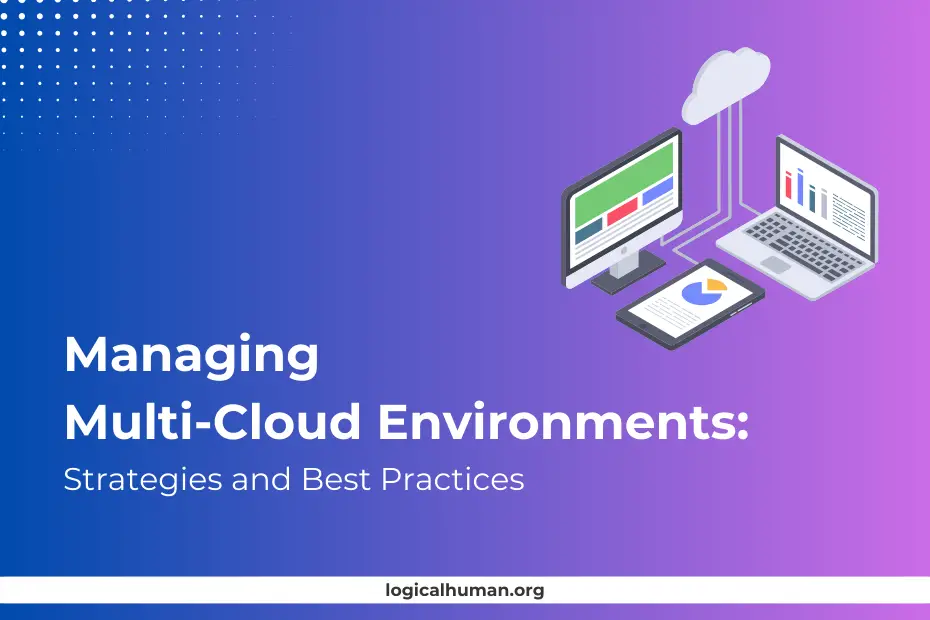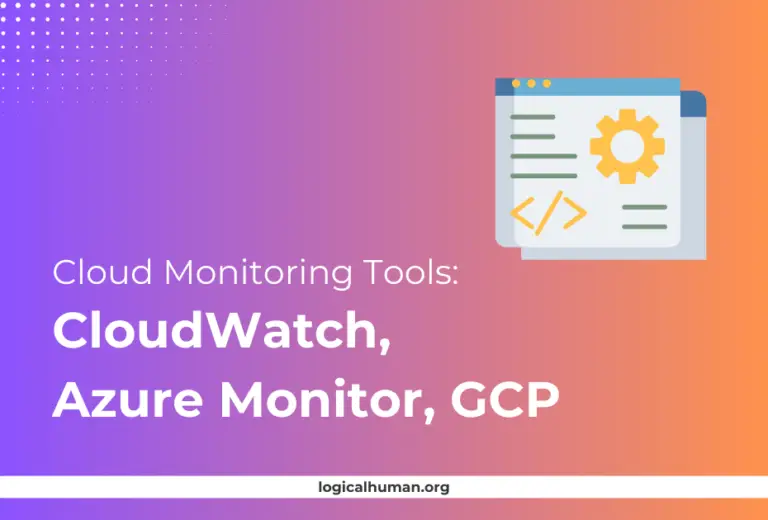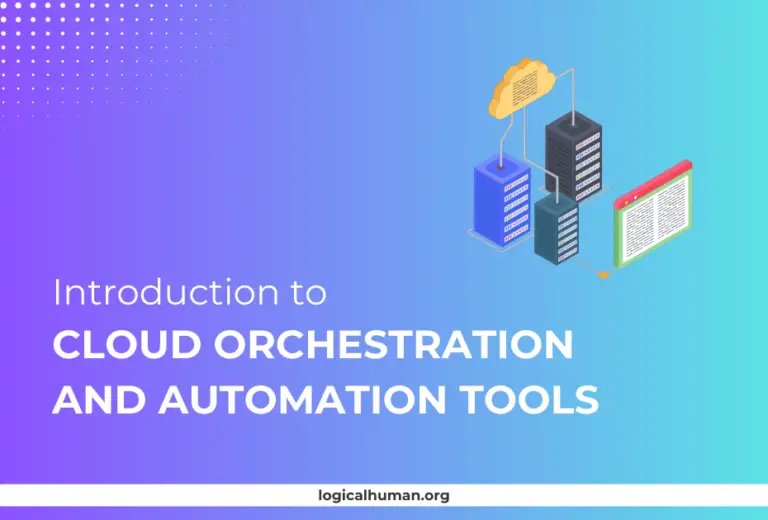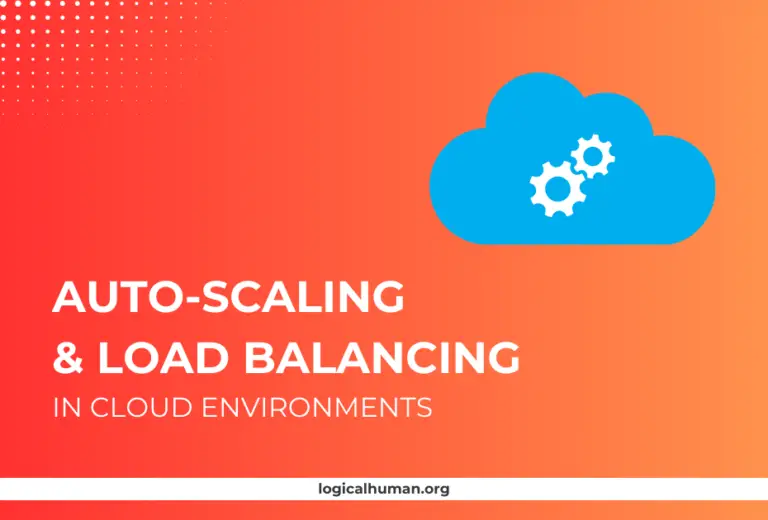The cloud has become the backbone of digital transformation for many organizations. As businesses continue to scale, they often turn to multiple cloud providers to meet their evolving needs. But managing multiple clouds? Well, that’s no easy feat! Multi-cloud environments refer to the strategy of utilizing two or more cloud services from different vendors to run various applications or workloads. It’s like having a diversified investment portfolio—you’re spreading the risk while gaining flexibility and scalability.
What is a Multi-Cloud Strategy?
A multi-cloud strategy is more than just using multiple clouds. It’s about orchestrating and optimizing the services of different cloud providers—think AWS, Azure, and Google Cloud—so they work in harmony. This approach helps businesses avoid vendor lock-in while taking advantage of each provider’s unique strengths. But it’s not without its challenges.
Importance of Multi-Cloud Management
Without proper management, a multi-cloud strategy can lead to chaos. You need the right tools, processes, and best practices in place to ensure efficient cloud use, avoid cost overruns, and keep your data secure. Multi-cloud management is about having full visibility into your environments and ensuring every cloud asset performs optimally.
Benefits of Adopting Multi-Cloud Strategies
Avoiding Vendor Lock-In
Ever heard of putting all your eggs in one basket? That’s essentially what vendor lock-in is. By relying on a single cloud provider, businesses become vulnerable to price hikes, service outages, or changes in terms. Multi-cloud helps you spread the risk, ensuring you’re never at the mercy of just one vendor.
Flexibility and Scalability
Different cloud providers excel in different areas. Maybe Azure has the best machine learning tools, but AWS offers better scalability. With multi-cloud, you get the flexibility to pick the best services from each provider, all while scaling your business seamlessly.
Improved Reliability and Performance
If one cloud goes down, the others pick up the slack. It’s like having backup players on a sports team. Multi-cloud strategies improve uptime and ensure higher performance by distributing workloads across different providers.
| Feature/Capability | Amazon Web Services (AWS) | Microsoft Azure | Google Cloud Platform (GCP) |
|---|---|---|---|
| Compute Services | EC2, Lambda, Elastic Beanstalk | Virtual Machines, Azure Functions | Compute Engine, Cloud Functions |
| Storage Solutions | S3, EBS, Glacier | Blob Storage, Disk Storage | Cloud Storage, Persistent Disks |
| Machine Learning & AI | SageMaker, Rekognition, Comprehend | Azure ML, Cognitive Services | AI Platform, AutoML, Vision AI |
| Networking | VPC, Direct Connect, Route 53 | Virtual Network, ExpressRoute | VPC, Cloud Interconnect, Cloud DNS |
| Database Options | RDS, DynamoDB, Aurora | SQL Database, Cosmos DB | Cloud SQL, BigQuery, Firestore |
Common Challenges in Managing Multi-Cloud Environments
Complexity of Management
Managing multiple clouds is no walk in the park. Each cloud provider has its own tools, billing structures, and security protocols. Juggling all these elements can be overwhelming without a unified management approach.
Cost Overruns
Cloud services can get expensive fast if you’re not careful. Without proper cost management, businesses can easily overspend, especially when dealing with multiple vendors.
Security and Compliance Issues
Multi-cloud environments mean multiple points of potential failure, especially in terms of security. Ensuring that all your cloud environments comply with industry regulations (e.g., GDPR, HIPAA) adds another layer of complexity.
Multi-Cloud Management Best Practices
Implement Centralized Management Tools
Keeping track of several clouds? You’ll need a centralized management tool. These platforms offer a single dashboard where you can monitor and control all your cloud resources, making life much easier.
Benefits of Unified Dashboards
Unified dashboards let you see the bigger picture. Instead of switching between multiple cloud consoles, a single interface provides real-time insights into costs, performance, and security, helping you make informed decisions faster.
Ensure Comprehensive Monitoring and Analytics
You can’t manage what you can’t measure. Comprehensive monitoring and cloud analytics help you track resource usage, identify performance bottlenecks, and ensure everything runs smoothly.
Standardize Security Protocols Across Platforms
Security should never be an afterthought, especially in multi-cloud environments. Standardizing security protocols ensures you maintain consistent security measures across all cloud providers.
Ensuring Compliance with Global Standards
Compliance with global standards like GDPR, HIPAA, and PCI DSS is crucial. Standardized security protocols help businesses meet these regulations across different clouds, reducing the risk of costly violations.
Multi-Cloud Cost Optimization Strategies
Leverage Cloud Cost Management Tools
No one likes getting hit with a surprise bill! Tools like AWS Cost Explorer, Azure Cost Management, and third-party platforms help you track and control cloud expenses across multiple providers.
Automating Cloud Usage Alerts and Reports
Automating alerts ensures you’re never blindsided by unexpected costs. Real-time usage reports can show you where you’re overspending, enabling you to make adjustments quickly.
Optimize Resource Allocation with AI and Automation
By incorporating AI and automation into cloud management, businesses can intelligently allocate resources, reducing waste and ensuring optimal performance.
Security Best Practices for Multi-Cloud Environments
Establishing a Zero-Trust Architecture
The zero-trust model assumes that threats could come from anywhere—both inside and outside your network. Implementing zero-trust architecture across your cloud environments ensures that all users and devices are verified before they can access resources.
Encrypting Data in Transit and at Rest
Encryption is critical in multi-cloud environments. Whether your data is in transit between clouds or sitting idle, encryption helps safeguard it from unauthorized access.
Regular Audits and Penetration Testing
Staying ahead of security risks requires regular audits and penetration testing. These tests simulate cyberattacks to identify vulnerabilities in your multi-cloud setup.
Integrating Automation in Multi-Cloud Management
Benefits of Automation for Cloud Orchestration
Automation in cloud orchestration simplifies tasks like load balancing, data migration, and resource scaling, freeing up your IT team to focus on more strategic initiatives.
Automated Scaling and Load Balancing
By automating scaling and load balancing, businesses can ensure optimal performance even during traffic spikes, minimizing downtime and improving user experience.
Simplifying Backup and Disaster Recovery
Automation can also streamline backup and disaster recovery processes, ensuring critical data is stored across clouds and can be easily restored if needed.
Multi-Cloud Governance and Compliance
Understanding Global Compliance Requirements
Each industry and country has its own set of compliance standards. Understanding these requirements is crucial when managing data across multiple clouds.
Automating Governance Policies
Automating governance policies ensures that your multi-cloud environment remains compliant without requiring constant manual intervention.
Tracking and Auditing Multi-Cloud Usage
Proper tracking and auditing allow you to keep tabs on who is accessing what data and when. This is essential for both security and compliance.
Leveraging AI and Machine Learning for Multi-Cloud Optimization
Predictive Analytics for Cloud Management
Predictive analytics can anticipate future needs and suggest the best allocation of resources, preventing over-provisioning and underutilization.
Automating Cloud Resource Management
AI-driven tools can automate resource management, dynamically scaling resources up or down based on real-time needs, optimizing costs and performance.
Performance Optimization in Multi-Cloud Environments
Network and Latency Considerations
Latency issues can cripple application performance. Optimizing network paths and using high-performance interconnects between cloud providers can mitigate this problem.
Using CDNs for Improved Delivery
Content Delivery Networks (CDNs) can significantly enhance content delivery speeds by caching data at various locations, reducing latency.
Balancing Workloads Across Clouds
Effectively balancing workloads ensures no single cloud provider is overburdened, enhancing both performance and cost-efficiency.
Disaster Recovery Strategies for Multi-Cloud Environments
Multi-Cloud Backup Solutions
Using multiple clouds for backup ensures your data is protected even if one provider experiences an outage. This is essential for business continuity.
Automating Failover Between Clouds
Automated failover mechanisms can switch your operations from one cloud provider to another in case of failure, minimizing downtime.
Testing Disaster Recovery Plans Regularly
Your disaster recovery plan is only as good as its last test. Regular testing ensures that your business can recover quickly from any disaster.
Hybrid Cloud vs. Multi-Cloud: Key Differences
What is a Hybrid Cloud?
A hybrid cloud combines on-premises infrastructure with cloud services, offering more control but less flexibility than a multi-cloud setup.
When to Choose Hybrid Over Multi-Cloud?
Hybrid clouds are ideal when regulatory requirements mandate certain data must be stored on-premises, or when businesses need low-latency access to critical applications.
Future Trends in Multi-Cloud Management
Rise of Edge Computing
Edge computing is set to complement multi-cloud strategies by bringing computation closer to the data source, reducing latency and improving performance.
Enhanced Cloud-Native Tools
As cloud providers continue to innovate, expect more sophisticated cloud-native tools designed to simplify multi-cloud management.
AI-Driven Cloud Management Tools
AI will play an increasingly critical role in automating complex multi-cloud management tasks, making it easier to optimize performance and reduce costs.
Real-Life Use Cases of Multi-Cloud Environments
E-commerce and Multi-Cloud Reliability
E-commerce businesses rely on multi-cloud environments to ensure their websites remain up and running during high-traffic events like Black Friday.
Healthcare Data Management with Multi-Cloud
Healthcare providers use multi-cloud environments to store and process sensitive patient data, ensuring both compliance and high availability.
Conclusion
Managing multi-cloud environments can be complex, but with the right strategies and best practices, it becomes a powerful tool for innovation, flexibility, and resilience. By adopting a well-planned multi-cloud strategy, businesses can take advantage of the best each cloud provider has to offer, all while avoiding common pitfalls like vendor lock-in and cost overruns.
FAQs
What is the key difference between hybrid and multi-cloud?
A hybrid cloud combines on-premises and cloud resources, while a multi-cloud strategy uses multiple cloud providers without necessarily integrating with on-premises infrastructure.
How do you handle security in a multi-cloud environment?
By standardizing security protocols, encrypting data, and conducting regular audits, you can maintain robust security across all cloud platforms.
What tools can help manage costs in multi-cloud?
Tools like AWS Cost Explorer, Azure Cost Management, and third-party platforms such as CloudHealth can help track and optimize costs across multiple cloud providers.
Can automation be integrated into multi-cloud strategies?
Yes, automation can handle tasks like scaling, load balancing, and disaster recovery, making multi-cloud management more efficient and cost-effective.
How do you choose the right providers for a multi-cloud strategy?
Choosing the right providers depends on your specific needs, such as compliance requirements, workload performance, and cost considerations. Evaluate each provider’s strengths and match them to your business objectives.



